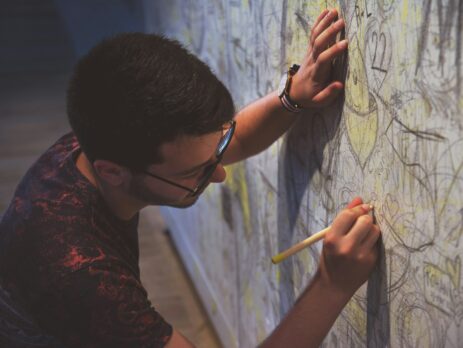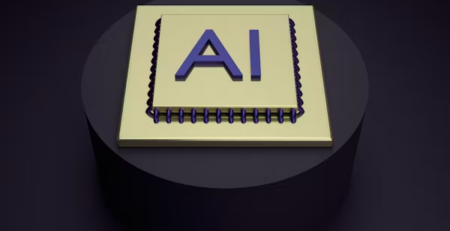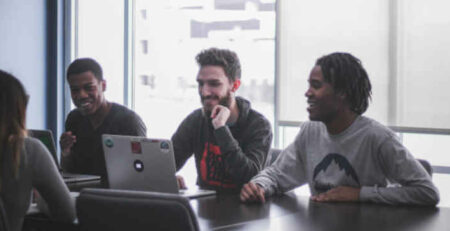Creative Recruitment Mastery: Finding the Best Animation Artists
In the rapidly evolving world of digital media, animation stands out as a dynamic and influential field. As businesses and creative agencies increasingly rely on animated content to communicate complex messages in engaging ways, the demand for skilled animation artists has surged. However, finding the right talent is not just about reviewing a portfolio; it involves understanding the nuances of animation, recognizing potential, and ensuring a good fit with the company’s culture.
Recruiting top-tier animation artists requires a deep understanding of the industry, including the latest trends and technologies. Employers must navigate through various specialties such as 2D animation, 3D animation, motion graphics, and visual effects. Each of these areas requires a unique set of skills and creative approaches, making the recruitment process even more challenging.
The importance of cultural fit cannot be overstated. Animation projects often require long hours of close collaboration, and the creative synergy within a team can significantly impact the quality and efficiency of the output. Therefore, recruiters must look beyond technical skills and consider how a candidate’s personality and work style will mesh with the existing team dynamics.
Moreover, the rise of remote work has expanded the talent pool globally, allowing companies to recruit animation artists from around the world. This shift presents both an opportunity and a challenge, as recruiters must adapt their strategies to effectively assess and integrate international talent.
Technology also plays a crucial role in the recruitment of animation artists. Advanced software not only helps in creating stunning animations but also in the recruitment process itself. Platforms that facilitate portfolio sharing, video interviews, and collaborative projects can streamline the hiring process and help in making more informed decisions.
To aid in these endeavors, companies often turn to specialized recruitment agencies that have a keen eye for spotting talent and a robust network within the creative community. These agencies can significantly shorten the time to hire and ensure that candidates meet the specific needs of the business.
However, the recruitment process doesn’t end with hiring. Onboarding and continuous professional development are crucial for retaining top talent. Providing new hires with the resources and support they need to succeed is essential for fostering innovation and keeping the creative juices flowing.
In this comprehensive guide, we will explore various facets of recruiting animation artists, from understanding the essential skills and tools of the trade to mastering the art of interviewing and onboarding creative talent. We will also delve into the strategies for maintaining a productive and inspired animation team.
Let’s begin by addressing some of the most frequently asked questions about recruiting animation artists, which will provide further insights into achieving mastery in creative recruitment.
Most Asked Questions About Finding the Best Animation Artists
- What are the key skills and tools every animation artist should possess?
- How can recruiters effectively assess an animation artist’s portfolio?
- What strategies can be used to attract top animation talent to your company?
- How does cultural fit impact the success of an animation team?
- What are the benefits of using specialized recruitment agencies for hiring animation artists?
- How can technology be leveraged to streamline the recruitment process for animation artists?
- What are the best practices for onboarding and retaining animation talent?
Key Skills and Tools for Animation Artists
When recruiting animation artists, it’s crucial to understand the specific skills and tools that are essential for success in this field. Proficiency in software like Adobe After Effects, Autodesk Maya, and Blender is often necessary, as these are the standard tools used in the creation of professional animations. Artists should also have a strong understanding of animation fundamentals such as timing, spacing, and character movement.
Beyond technical skills, creativity and storytelling ability are equally important. Animation is not just about creating visually appealing sequences; it’s about conveying stories and emotions that resonate with audiences. Therefore, a good animation artist must also be a good storyteller, capable of translating abstract ideas into compelling visual narratives.
Collaboration is another critical skill. Whether working in a studio setting or as part of a remote team, animation artists must be able to communicate effectively with other team members, including directors, writers, and other animators. This ensures that the project’s vision is consistently realized across all stages of production.
Attention to detail is a must-have quality in this profession. Animations that stand out are often distinguished by their meticulous attention to detail—whether it’s the subtle movements of a character’s facial expressions or the dynamic interaction of elements within a scene.
Problem-solving skills are also essential, as animation artists often encounter technical and creative challenges that require innovative solutions. Whether adjusting to budget constraints, tight deadlines, or technical issues with animation software, the ability to quickly identify and solve problems is invaluable.
To assess these skills effectively, recruiters can use a combination of portfolio reviews, technical tests, and behavioral interviews. These methods help in evaluating not only the technical competence of the artists but also their creative thought processes and problem-solving abilities.
For more insights into the tools and technologies shaping the animation industry, consider exploring resources like Creative Bloq’s guide to top animation tools for digital artists, which provides a comprehensive overview of the software and hardware that are crucial for modern animators.
In summary, the recruitment of skilled animation artists requires a balanced assessment of both their creative and technical abilities. By focusing on these key areas, recruiters can ensure they are selecting candidates who will not only fulfill the technical demands of the role but also contribute creatively to the team’s success.
Assessing an Animation Artist’s Portfolio
Effectively assessing an animation artist’s portfolio is a critical step in the recruitment process. A portfolio not only showcases an artist’s technical skills and creativity but also provides insight into their professional journey and development. Recruiters should look for a variety of projects that demonstrate versatility and a deep understanding of different animation techniques.
It’s important to evaluate the complexity of the projects included in the portfolio. High-quality animations with detailed backgrounds and dynamic character movements indicate a high level of proficiency. Additionally, the inclusion of storyboard sketches, character designs, and other preparatory work can demonstrate the artist’s thorough understanding of the animation process from start to finish.
Originality is another crucial factor. A portfolio that features unique concepts and imaginative executions suggests that the artist is capable of bringing new ideas to the table. This is particularly important for companies looking to stand out in the competitive field of digital media.
Technical skill is, of course, a fundamental aspect to scrutinize. Familiarity with industry-standard software and tools, as evidenced by the smoothness and polish of the animations, is a must. Recruiters should also note the artist’s ability to use different styles and techniques, adapting to the needs of various projects.
Collaborative projects should not be overlooked. These can highlight the artist’s ability to work effectively with others and adapt their personal style to suit collective goals. It’s also beneficial to look at the artist’s role in these projects to understand their specific contributions.
Feedback and revisions are part of the creative process. Portfolios that include revisions or iterations of a project show an artist’s willingness to adapt and improve their work based on feedback, which is a valuable trait in any creative industry.
For a deeper dive into evaluating creative portfolios, recruiters can refer to School of Motion’s blog, which highlights websites with exceptional animation work and can serve as a benchmark for what to look for in a candidate’s portfolio.
In conclusion, a well-rounded assessment of an animation artist’s portfolio should include an evaluation of technical skills, creativity, versatility, and collaborative experience. By carefully analyzing these elements, recruiters can make informed decisions that contribute to the success of their creative teams.
Attracting Top Animation Talent
Attracting top animation talent requires a strategic approach that goes beyond traditional job postings. Companies must actively engage with the animation community, showcasing their commitment to creativity and innovation. Participating in industry conferences, hosting workshops, and maintaining an active presence on social media platforms where animators gather can help attract attention from top talent.
Offering competitive compensation is crucial. To ensure your offers are attractive, refer to resources like iCreatives’ guide on competitive salaries, which can help you benchmark compensation packages against industry standards.
Creating a culture that values creativity and continuous learning can also be a significant draw. Highlighting opportunities for professional development, such as access to advanced training sessions and attendance at leading animation festivals, can make your company more appealing to ambitious artists.
Flexibility is increasingly important to professionals in all fields, including animation. Offering remote work options or flexible working hours can make your positions more attractive to top talent who may be looking for a better work-life balance.
Transparency in the recruitment process is also key. Providing clear information about job roles, expectations, and career progression paths can help candidates assess whether they are a good fit for your company and vice versa.
For more strategies on attracting and hiring top talent, consider exploring iCreatives’ insights on recruitment marketing, which provides valuable tips on how to market your company to prospective employees effectively.
In summary, attracting top animation talent involves a combination of competitive compensation, engagement with the creative community, opportunities for professional growth, flexibility, and transparency. By focusing on these areas, companies can improve their chances of attracting and retaining the best animators in the industry.
Cultural Fit and Animation Teams
The concept of cultural fit is particularly important in creative fields like animation, where collaboration and mutual understanding significantly impact the quality of the final product. A team that shares similar values, work ethics, and creative visions is more likely to produce cohesive and innovative work.
When assessing cultural fit, it’s important to consider the candidate’s communication style, work ethic, and problem-solving approaches. These factors can greatly influence how well a new hire will integrate with the existing team.
It’s also beneficial to involve various team members in the recruitment process. This not only helps in assessing the compatibility of the candidate with the team but also allows the candidate to get a feel for the team’s dynamics and working style.
Creating an inclusive environment that welcomes diverse perspectives and backgrounds can enhance creativity and innovation within the team. Therefore, cultural fit should not be about conformity but rather about complementing and enriching the team’s dynamics.
For further reading on building effective teams, consider checking out iCreatives’ article on building trust between managers and employees, which offers insights into fostering a positive and productive work environment.
In conclusion, cultural fit plays a crucial role in the success of animation teams. By carefully considering how a candidate’s personal and professional attributes align with the team’s culture, companies can foster a more collaborative and innovative environment.

Using Recruitment Agencies for Hiring Animation Artists
Specialized recruitment agencies can be invaluable partners in the search for top animation talent. These agencies typically have extensive networks and a deep understanding of the creative industries, which can help streamline the recruitment process and increase the chances of finding the right candidate.
One of the main benefits of using a recruitment agency is their ability to access a wider pool of candidates. Agencies often have connections with passive candidates who may not actively be looking for new opportunities but are open to the right offers.
Agencies also bring expertise in the screening and evaluation of candidates. They can handle the initial stages of the recruitment process, from reviewing portfolios to conducting preliminary interviews, which can save valuable time for the hiring company.
Furthermore, recruitment agencies can provide valuable market insights and advice on crafting competitive offers that appeal to top talent. This can be especially helpful for companies that are new to the creative sector or are looking to expand their teams quickly.
For more information on the benefits of using staffing agencies, consider reading iCreatives’ guide to using a staffing agency, which provides a detailed look at how these agencies can enhance your hiring strategy.
In summary, specialized recruitment agencies offer a range of benefits that can significantly enhance the efficiency and effectiveness of the hiring process for animation artists. By leveraging their expertise and networks, companies can improve their chances of finding the perfect candidate for their needs.
Leveraging Technology in Recruitment
Technology plays a pivotal role in modern recruitment practices, especially in creative fields like animation. Utilizing the right technological tools can streamline the hiring process, enhance candidate engagement, and improve the overall efficiency of recruitment strategies.
Applicant Tracking Systems (ATS) are widely used to manage applications and simplify the screening process. These systems can help recruiters keep track of numerous applications and quickly identify candidates who meet specific criteria.
Video interviewing platforms have become increasingly popular, particularly in the context of remote hiring. These platforms allow for a more personal interaction with candidates and can be especially useful in assessing the communication skills of animation artists.
Portfolio websites and professional networking platforms like LinkedIn are essential tools for recruiters. These platforms not only provide access to a large pool of candidates but also allow recruiters to view detailed portfolios and career histories.
Collaboration tools such as Slack and Trello can also be used to facilitate communication between recruiters and hiring managers, ensuring that all parties are aligned throughout the recruitment process.
For more insights into how technology can enhance recruitment efforts, check out iCreatives’ guide to using AI tools at work, which explores the potential of artificial intelligence in improving productivity and decision-making in the workplace.
In conclusion, leveraging technology is essential for modern recruiters, especially when hiring in creative fields like animation. By utilizing a range of technological tools, companies can make their recruitment processes more efficient and effective, ultimately leading to better hiring outcomes.
Onboarding and Retaining Animation Talent
Effective onboarding is critical to the success and retention of new hires, especially in creative fields like animation. A well-designed onboarding program can help new employees integrate into the team more quickly and start contributing to projects sooner.
Onboarding should include a comprehensive introduction to the company’s culture, values, and expectations. It’s also important to provide new hires with detailed information about their specific roles and the tools and resources they will need to perform their tasks effectively.
Mentorship programs can be particularly effective in the animation industry. Pairing new hires with experienced mentors not only facilitates knowledge transfer but also helps new employees navigate the company’s workflow and culture.
Continuous learning and development opportunities are key to retaining top talent. Offering workshops, courses, and access to industry events can motivate employees to keep improving their skills and stay updated with the latest trends and technologies in animation.
Regular feedback and performance reviews are also important. These should be constructive and focused on helping employees grow and succeed in their roles. For more information on conducting effective performance reviews, see iCreatives’ guide to performance reviews.
In summary, effective onboarding and retention strategies are essential for maintaining a motivated and productive animation team. By investing in these areas, companies can ensure that their animation artists feel valued and supported, leading to better retention rates and more successful projects.
Conclusion
Mastering the art of recruiting animation artists requires a comprehensive approach that includes understanding the specific skills and tools of the trade, effectively assessing candidates’ portfolios, and implementing strategies to attract, onboard, and retain top talent.
By focusing on these key areas, companies can build successful animation teams that are capable of producing innovative and engaging content. Additionally, leveraging technology and specialized recruitment agencies can further enhance the efficiency and effectiveness of the recruitment process.
Ultimately, the goal is to create an environment that fosters creativity and collaboration, allowing animation artists to thrive and contribute to their fullest potential. With the right strategies in place, companies can not only find but also nurture the talent that will drive their creative projects to new heights.For those looking to delve deeper into the nuances of creative recruitment and team management, the resources provided throughout this guide offer valuable insights and practical tips that can help refine your recruitment strategies and foster a more dynamic and productive creative workforce.
In today’s competitive market, finding the right creative and marketing expert can be a challenge. But with icreatives, you’re in experienced hands. With 37 years in staffing and a track record of matching more than 10,000 employees to over 1,000 companies worldwide, we know how to connect you with the best. Plus, you only pay if you hire—there’s no risk, only results.
Ready to find your perfect creative or marketing expert? HIRE WITH ICREATIVES today!












